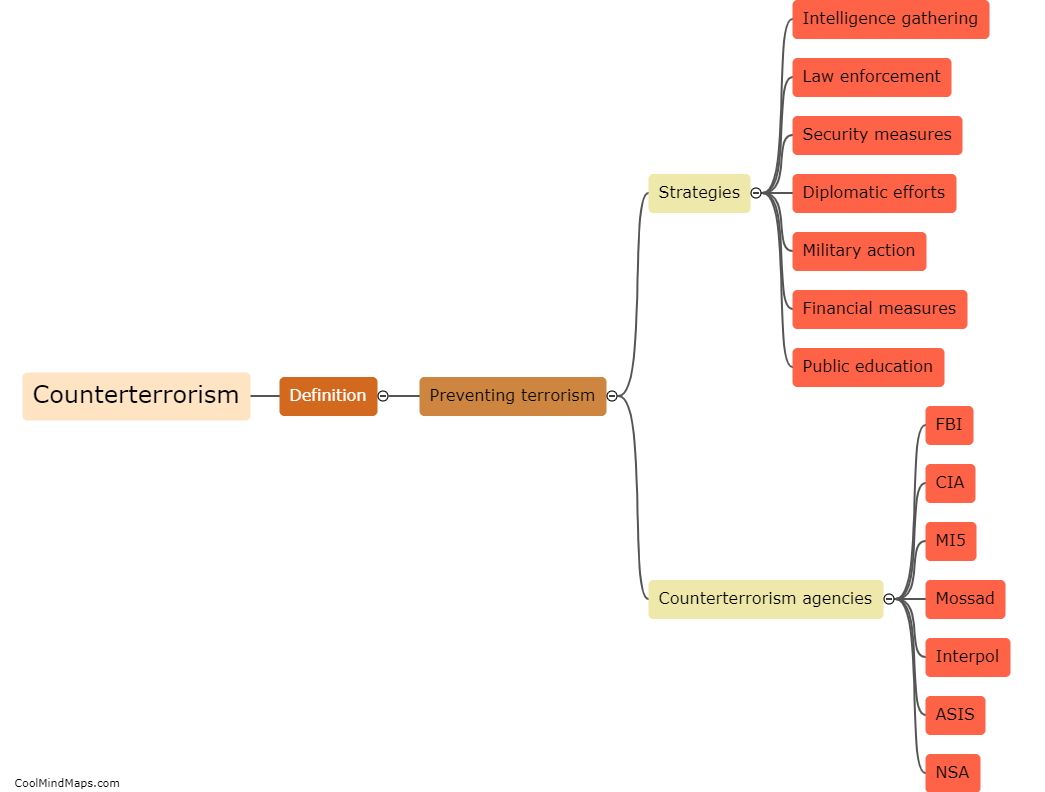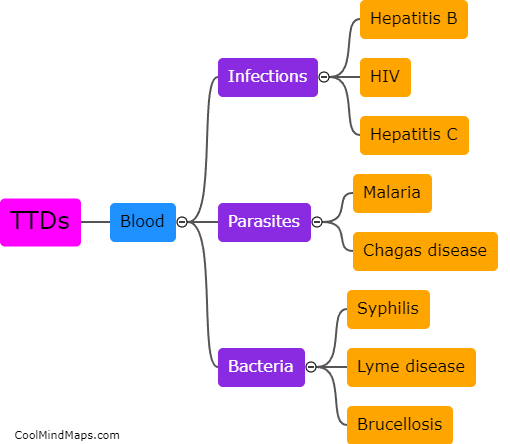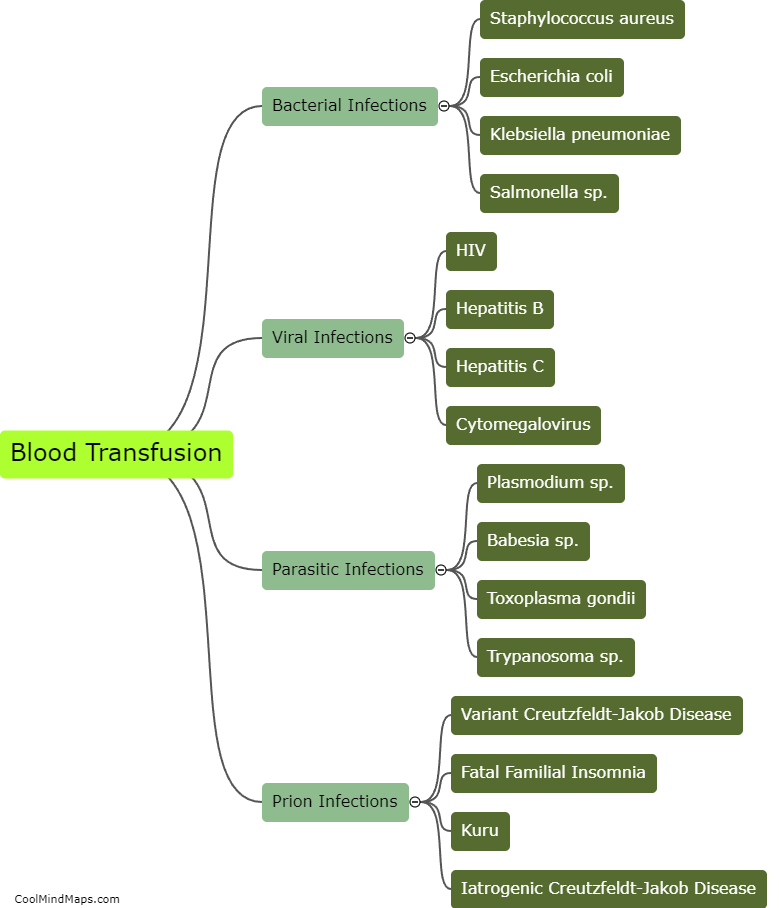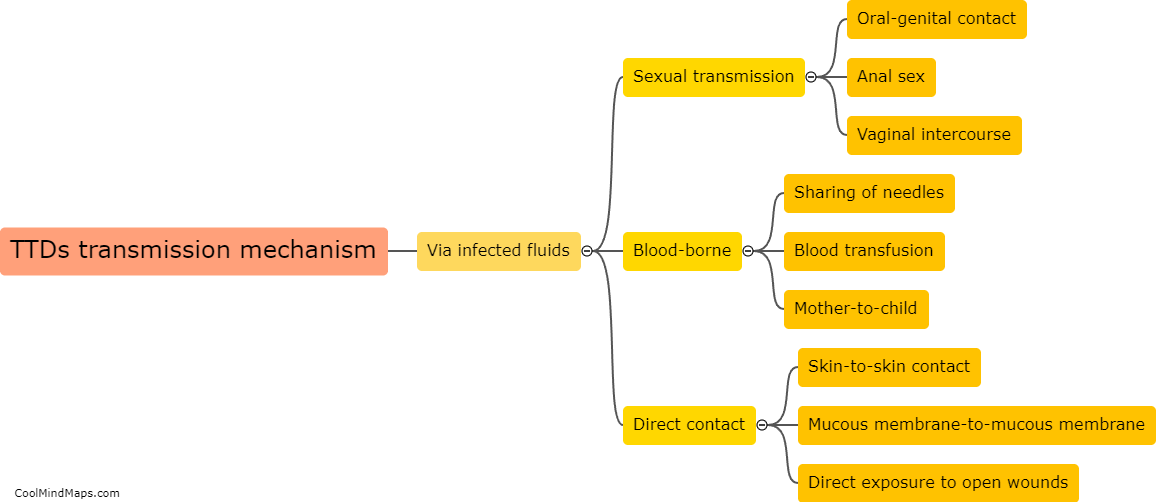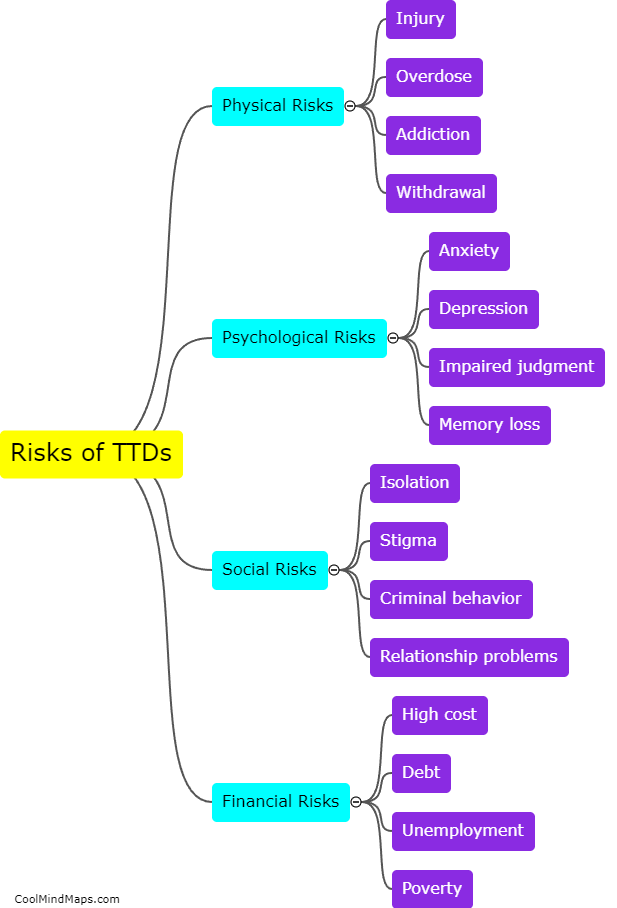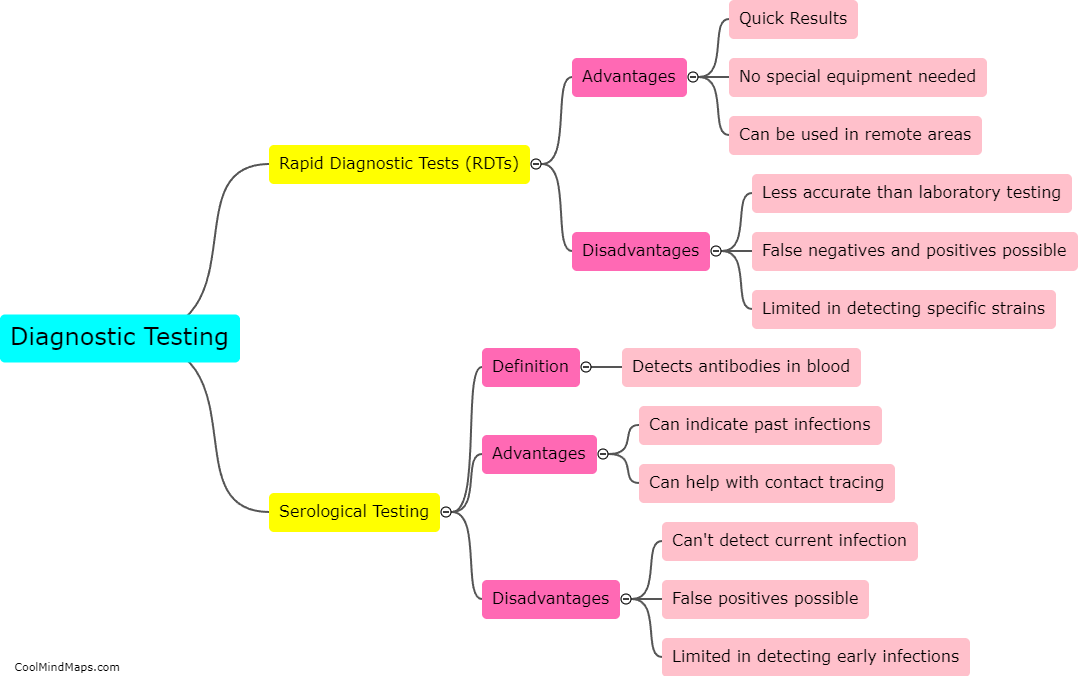What are current methods for screening donated blood?
Current methods for screening donated blood involve several laboratory tests. Initially, donors are asked a series of screening questions regarding their medical history and current health status. Blood samples are then tested for infectious disease markers, including HIV, hepatitis B and C, syphilis, and West Nile virus. In addition, newer technologies are being developed to detect other infectious agents such as Zika virus, Chagas disease, and Dengue fever. These tests are critical in ensuring that blood transfusions are safe and effective for patients in need.
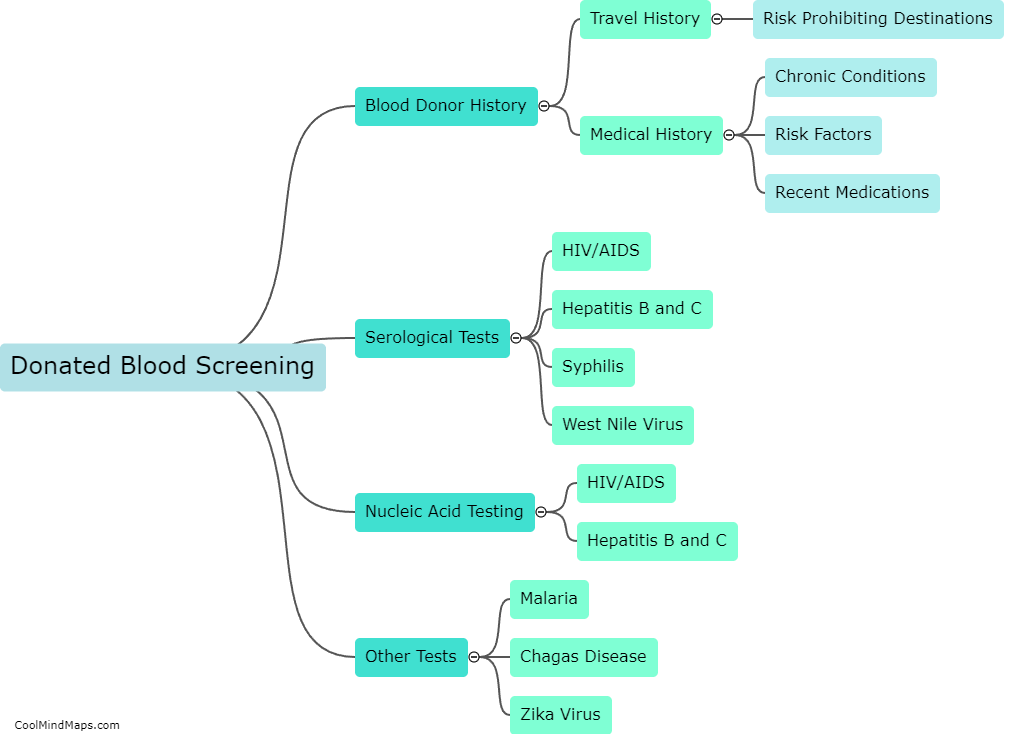
This mind map was published on 25 June 2023 and has been viewed 133 times.

